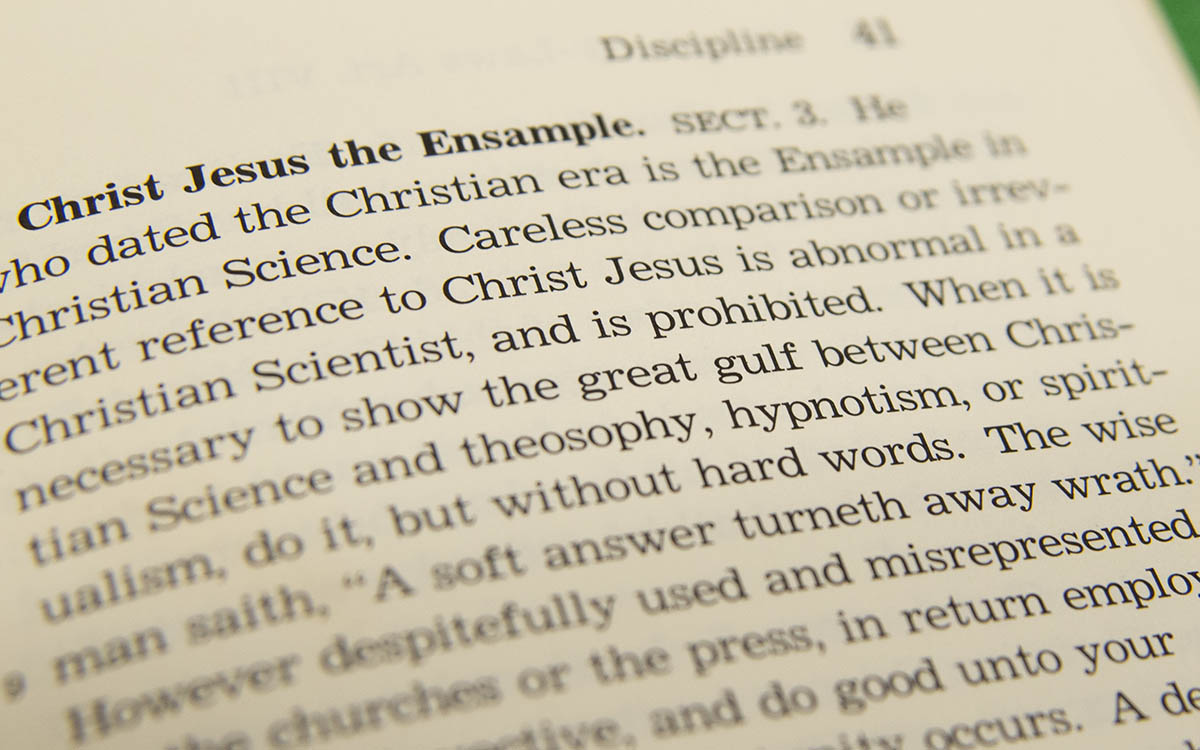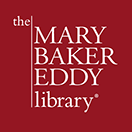What did Eddy say about theosophy?

In the religious and philosophical history of the United States, 1875 was a notable year. It marked the first publication of Mary Baker Eddy’s textbook on Christian Science, Science and Health. It also saw the founding of the Theosophical Society, an organization that gave institutional form to a complex philosophy.
Helena Petrovna Blavatsky (1831–1891) developed the teachings of theosophy. They included an eclectic blending of Eastern philosophies, belief in reincarnation, and spiritualism. Blavatsky claimed that some of the teachings she incorporated into theosophy came from “Mahatmas”— adepts living in the Himalayas. She taught that Jesus was one of a number of great religious and ethical teachers, but had no unique connection to “the Christ,” which denoted an inner mystical state.1
Blavatsky and her followers saw theosophy as representing the ultimate synthesis of religion, philosophy, and science, and felt it would lead the way to a more advanced stage in the spiritual evolution of humanity. Theosophy also included teachings about what they regarded as the immense, but often unrealized, powers of the human mind.2
Christian Science evoked pointed criticisms from Blavatsky and other theosophists, beginning with Blavatsky’s 1889 critique in Lucifer magazine. That article, and others like it, were later published in the booklet Some of the Errors of Christian Science. Two arguments show up repeatedly. First, that Christian Science healings were not really spiritual but resulted from ignorant application of the powers of the human mind. Blavatsky said in her message to the American Theosophical Convention in 1890, “Understand once and for all that there is nothing ‘spiritual’ or ‘divine’ in ANY of these manifestations. The cures effected by them are due simply to the unconscious exercise of occult power on the lower planes of nature….”3
Second, theosophists held that healings brought about by Christian Science interfered with the natural workings of the law of karma. They believed that diseases in one’s present life resulted from bad thoughts or actions in a past incarnation, and that such diseases should be allowed to run their course to fulfill karmic law. If symptoms of a disease were removed by Christian Science healing, theosophists believed, the essence of the disease still existed as an “unexpended cause” that was “sure at some other time to come out again, whether in this life or in another life.”4
Even though some critics of Christian Science claimed that it resembled theosophy, Eddy distinguished the religion from theosophy in her published writings, and in letters. She wrote that theosophy could impede the acceptance and demonstration of Christian Science healing. For example, she explained in her book No and Yes that theosophy “…sprang from the Oriental philosophy of Brahmanism, and blends with its magic and enchantments. Theosophy is no more allied to Christian Science than the odor of the upas-tree is to the sweet breath of springtide ….”5 We don’t know exactly when Eddy became aware of the theosophical movement. But her first references to it appeared in the latter half of the 1880s—not surprising, in that the Theosophical Society in America by then had branches in 14 cities. For example, the October 1886 Christian Science Journal included a letter by Mrs. H. D. Cope, along with Eddy’s reply. In order to further her understanding of Christian Science, Cope had unwittingly taken a class with a theosophist, who recommended that the class study Esoteric Buddhism by theosophist Alfred Sinnett. After doing so, Cope wrote Eddy:
I am now all confusion and mixed. I can not reconcile it with the life and teachings of Jesus Christ. I can not reconcile it with your teachings, consequently. Now, will you help me?
She went on to describe some of the teachings in Sinnett’s book.
Eddy’s reply refuted these teachings and recommended that Cope “quit other reading and confine yourself for the present to the perusal of the Scriptures, and my work, Science and Health.… This course pursued, and you will gain consolation and light.” She ended by responding to Cope’s question as to whether one could believe in both theosophy and Christian Science and be a successful healer: “I answer, No! ‘As well might a camel go through the eye of a needle.’ Christ is the way ….” 6
Unless Christian Scientists practiced a pure Christianity, she counseled her student Ellen Linscott, Christian Science would disappear and be replaced by “the schools of Gnostic[ism] and Theosophy.”7 Two months later, Eddy wrote to Ellen’s husband, John Linscott:
There is a Theosophical Society formed here [in Boston] and I saw a list of the books and their contents which teaches how to practice fear, love (free love of course), hate, sickness, etc. etc. Also how to empower spirits to their bidding. Now, dear student, I thank God that you were not drawn into their snare ….8
Later, Hermann Hering wrote about an interview he had with Eddy, in which she said, “You should handle theosophy daily.” Hering continued:
Having known something about theosophy and knowing what a vast subject it is, and its great variety of evil work, I leaned forward and asked whether there was any particular phase of theosophy that she referred to, or that should be handled. Mrs. Eddy replied, “They claim to be able to bring about events.” She said that that was the great danger, and the main claim to handle….9
Eddy rejected theosophy but urged Christian Scientists not to personally attack its adherents. She included the By-Law “Charity to All” in the Manual of The Mother Church:
While members of this Church do not believe in the doctrines of theosophy, hypnotism, or spiritualism, they cherish no enmity toward those who do believe in such doctrines, and will not harm them. But whenever God calls a member to bear testimony to Truth and to defend the Cause of Christ, he shall do it with love and without fear.10
Although less prominent today, elements of theosophical teachings still further the development of various approaches to spirituality, as well as groups promoting them.
For related reading, see “Does The Secret Garden have connections with Christian Science?“
This article is also available on our French, German, Portuguese, and Spanish websites.
- Pablo D. Sender, “Mahatmas versus Ascended Masters,” Quest, Summer 2011, 107–111.
- See Annie Besant, Thought Power: Its Control and Culture (London and Benares: Theosophical Publishing Society, 1901).
- H. P. Blavatsky and W. Q. Judge, Some of the Errors of Christian Science (Point Loma, California: Aryan Theosophical Press, 1907), 5.
- Blavatsky and Judge, Some of the Errors of Christian Science, 10.
- Mary Baker Eddy, No and Yes (Boston: The Christian Science Board of Directors), 14.
- Mary Baker Eddy, “Questions Answered,” The Christian Science Journal, October 1886, 160–161.
- Mary Baker Eddy to Ellen Linscott, 8 March 1887, L11008.
- Mary Baker Eddy to John Linscott, 15 June 1887, L11033.
- Hermann S. Hering, “Memoirs of Professor Hermann S. Hering, C.S.B.,” n.d., Reminiscence, 24.
- Mary Baker Eddy, Manual of The Mother Church, 89th edition (Boston: The Christian Science Board of Directors), 47–48.

